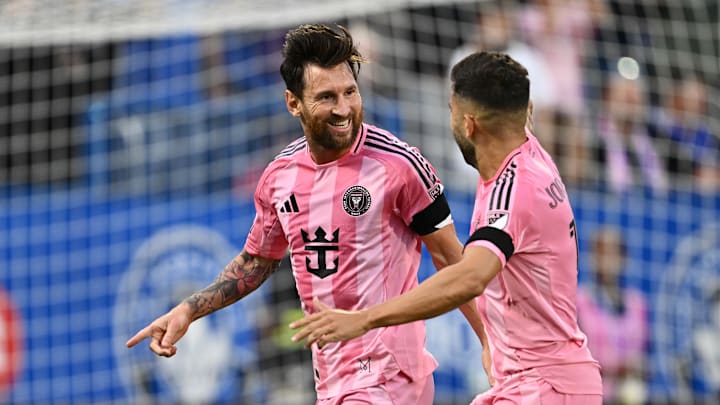Barcelona legend Lionel Messi has been heavily linked with a blockbuster move to the Saudi Pro League as his contract with Inter Miami approaches its end. According to reports, negotiations are beginning and interest is being sounded out between Messi’s representatives and Al Hilal, raising the possibility of yet another stunning chapter in his illustrious career.
It’s believed that Al Hilal are prepared to match, or even surpass, the eye-watering deal Cristiano Ronaldo signed with Al Nassr, reportedly offering Messi a salary in the region of €300 million per year.
While Messi is said to be content with life in Major League Soccer, financial incentives of this magnitude are hard to ignore, especially for a player that is unlikely to get a top European club come knocking. Al Hilal may be the only club capable of putting forward a proposal enticing enough to turn his head. Adding another layer to the potential deal is Messi’s existing partnership with the Saudi tourism board, which could help smooth negotiations and strengthen the ties needed to finalise the move.
As the 38-year-old weighs his options, the football world watches closely. A reunion with Ronaldo in the Saudi Pro League would not only reignite one of the sport’s greatest rivalries but also signal another power shift in the global football landscape.
A return to Barcelona on the cards?
There have been growing reports suggesting that Lionel Messi is considering a short-term loan return to Europe ahead of the 2026 World Cup. The idea behind the move would be to re-immerse himself in elite-level football and regain top form on the international stage. Naturally, if such a move were to materialise, Barcelona would be the most sentimental and obvious destination, his spiritual footballing home.
However, while the romance of a Messi homecoming would delight fans worldwide, the reality on the pitch may tell a different story. Since his departure, Barcelona have undergone a generational shift, with emerging star Lamine Yamal occupying Messi’s former role on the right wing. The youngster's rise has been rapid, and benching him to accommodate a short-term return would be a backward step for the club’s long-term project.
A move into a central ‘number 10’ role for Messi also presents tactical complications. At 38, his defensive work rate has noticeably declined, and Barcelona’s current system, especially under a high-pressing coach like Hansi Flick, relies heavily on mobility and pressing from all forward players. Deploying Messi in that position would risk unbalancing the midfield, effectively leaving it as a two-man unit, one of whom is likely to be the attack-minded Pedri. This setup could leave Barça exposed defensively, particularly in transition.
While Messi’s leadership and legacy will always command respect, the question remains: would a nostalgic return be worth compromising the club’s tactical evolution? It may serve as a beautiful send-off, but not necessarily a practical footballing decision.
